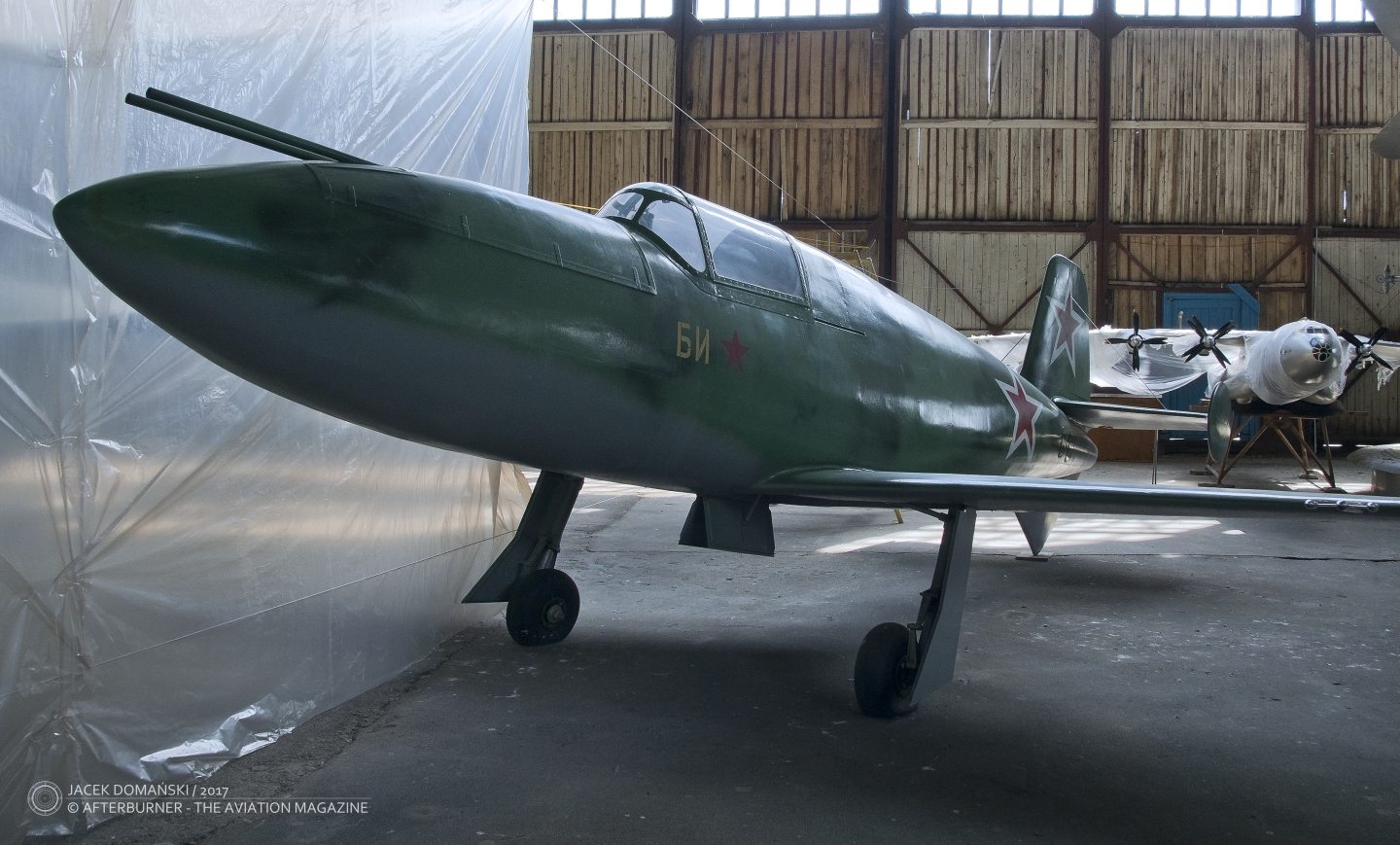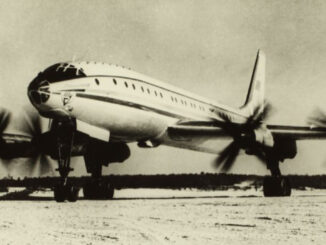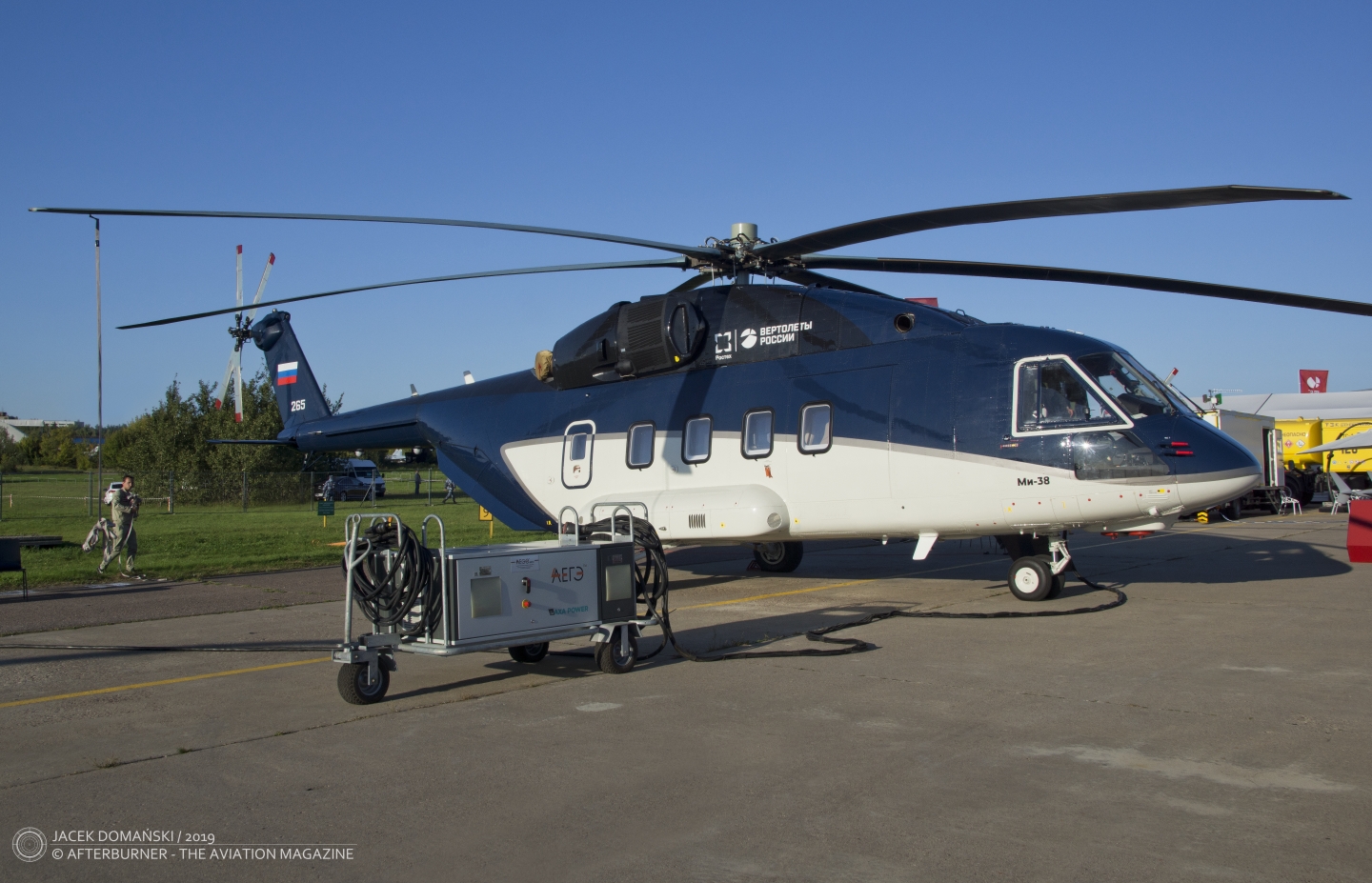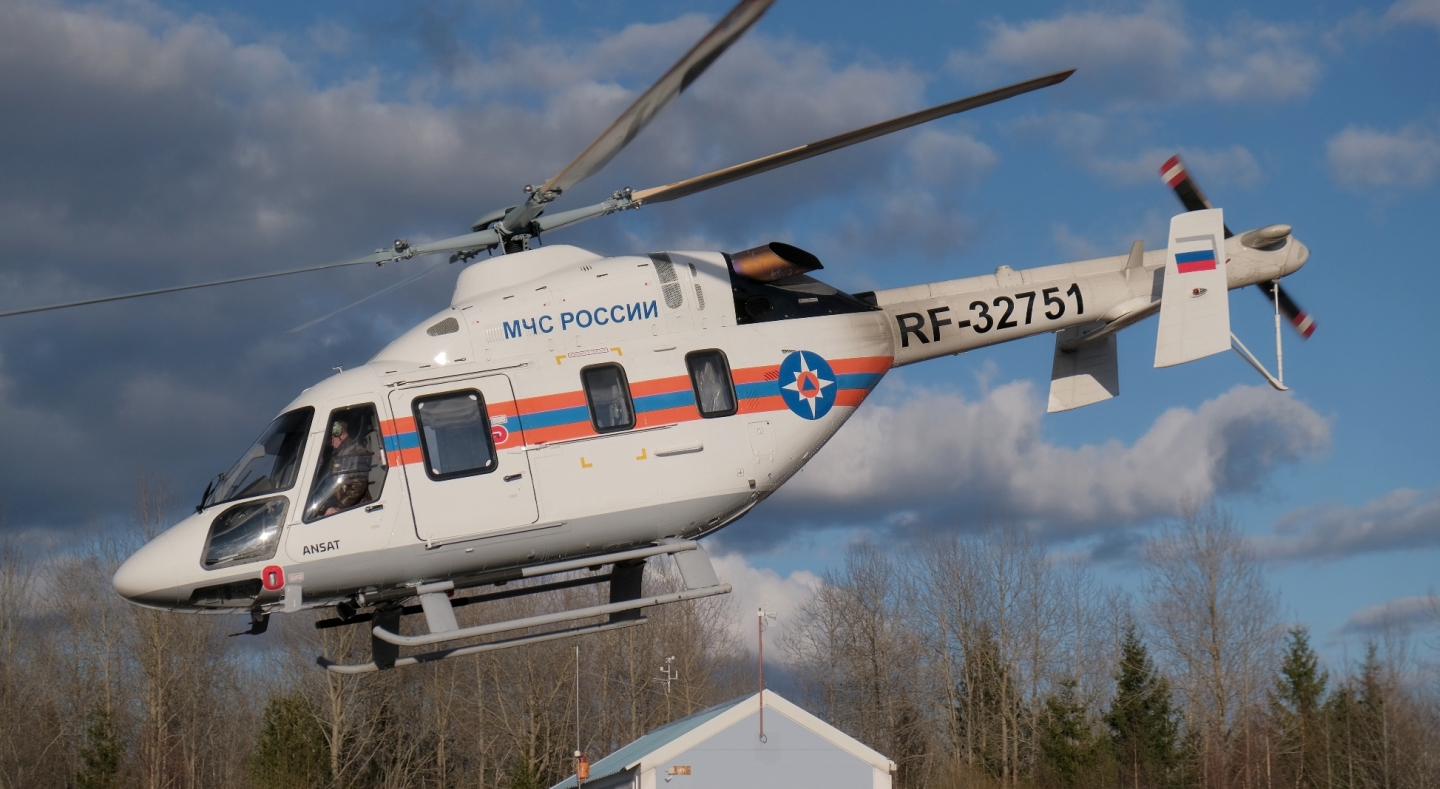
Bereznyak-Isayev BI-1 / БИ-1 (also known as Ближний Истребитель – short range interceptor), prototype of a rocket-powered interceptor from 1940s, exhibited in the Central Air Force Museum in Monino, July 2017.
Shortly before the German invasion of the Soviet Union in 1941 and based on the past experiences from the air combat in two initial years of war, there appeared an idea about creating a high-altitude and high-speed interceptor. This initiative was launched by two engineers working in the aviation plant No. 293, Alexander Yakovlevich Bereznyak (aircraft designer) and Aleksei Mikhailovich Isaev (rocket engineer). As the rumour says, this idea was introduced to Stalin, who liked it and personally approved the development of new aircraft.
The idea behind a rocket interceptor was very simple. At that time, with the absence of radar installations and low effectivity of the air raid warning system, an interceptor that could react without any usual delay seemed to be an attractive solution. Although the existing rocket engines were high on fuel consumption, allowing the aircraft to be powered only for up to four minutes, this should be enough time for a fast intercept.
All that was required from such aircraft, was the ability to take-off almost immediately, climb to the required ceiling within seconds and perform one lightning-fast attack. Therefore, this concept eliminated the usual operational delay of the propeller-driven aircraft that had to be prepared for the flight, take-off from the airfield located away from the target and then chase the bombers.
The development of new rocket interceptor began in July 1941 and the first flight of the new design – yet without an engine, in the glider-mode – was performed in September. Shortly thereafter the factory had to be evacuated to the Ural area and the test were re-launched again in December.
In the beginning of 1942 the rocket engine was chosen (D-1 A1100 from Dushkin construction bureau) but the initial tests were not successful. On 20th February the engine exploded while running, injuring the test pilots and designers and damaging the test bench.
Only in May 1942 the BI-1 interceptor took-off for the first time, powered by its rocket engine. An altitude of 840 metres was reached with the maximum climb rate of 23 m/s.
However it soon turned out that the first prototype was damaged by the leaks of nitric acid and then two more prototypes were built, named BI-2 and BI-3. A few further test flights were performed with those aircraft, reaching the altitude of 4,000 metres and the maximum climb rate of 160 m/s. The top speed registered during the flight made in January 1943 exceeded 675 kph. However, it seemed that this is still far from the limit and therefore the maximum speed of the rocket interceptor had to be tested. And this decision led to a disaster.
The seventh test flight, done with the BI-3 prototype, was performed on 27th March 1943 with G. Y. Bakhchivandzhi being the test pilot. He was ordered to stay at the ceiling of 2,000 metres and fly until the engine turns off after consuming all the fuel. Unexpectedly, during the final phase of the flight, the aircraft went into a dive and crashed, killing the pilot.
At the beginning, many hypotheses appeared, trying to explain the reason of the crash. The flights of BI aircraft were put on hold and only after several test performed in the wind tunnel at TsAGI, the new phenomenon of transonic effect was revealed. The exact speed reached by BI-3 during this fatal flight could not be determined due to damage of the measuring equipment, but it is estimated as between 800 and 1,000 kph.
As a result, the rocket interceptor programme was officially cancelled. Although two more test flights were performed in 1945 with the BI-7 prototype.
In the final conclusion it must be noted that Bereznyak-Isayev rocket interceptor did not meet its objective. The programme was approved as the quick and alternative solution for the air defence, that should be ready and operational within a few months. Regrettably, the development lasted too long, beyond the turn of the war tide in 1943.
In the defence of the development team it must be said that they were working with a unique idea and met with some issued that were not sufficiently known before. And yet, interestingly, the same idea was born in Germany around 1939 and finally resulted in Me 163 ´Komet´ rocket interceptor. Unlike the BI aircraft, Me 163 managed to became operational in 1944. However, no information suggest that Bereznyak and Isayev were familiar with Alexander Lippisch´s idea and then decided to develop their own rocket aeroplane.



